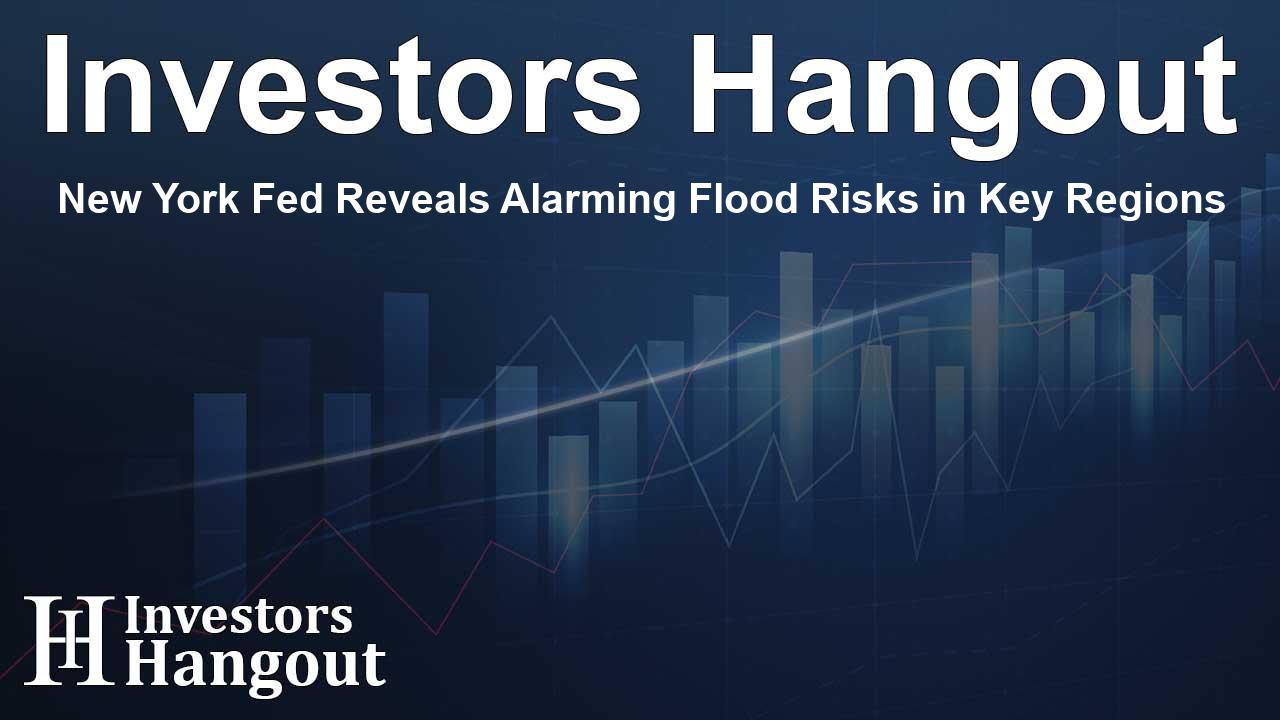New York Fed Reveals Alarming Flood Risks in Key Regions

Significant Flood Risks Uncovered by New York Fed Report
Recent findings from the Federal Reserve Bank of New York have brought to light a pressing environmental concern: the heightened risk of flooding for residential properties across areas in New York, New Jersey, and Connecticut. This chilling report underscores that homes in these regions face some of the highest flooding risks in the country.
Extent of the Flood Risk
The report highlights that approximately one in ten properties in this tri-state region is at a substantial risk of flooding, categorizing them among the top 25% of properties across the nation vulnerable to such events. This alarming statistic persists even when traditional flood-prone areas, like the southeastern United States, are factored in.
Beyond Coastal Areas
Interestingly, the flood risk is not strictly associated with proximity to the coastline. It is essential to recognize that flood vulnerabilities are not confined to urban centers like New York City. The report emphasizes that inland locales, including cities like Buffalo and Syracuse, are experiencing significant risks due to heavy rainfalls, flash floods, and overflowing rivers.
Community Development and Its Role
The New York Fed crafted this report as part of their Community Development initiatives. These efforts aim to address critical issues surrounding health, financial well-being, and climate risk within communities. The focus on these topics highlights the need for proactive measures addressing the rising concerns about flooding as a consequence of climate change.
The Scale of Vulnerability
The data suggests that around one million properties susceptible to flooding are home to approximately 1.6 million households, amounting to about four million residents in total. A striking statistic reveals that more than 400,000 of these properties are located in low- to middle-income neighborhoods, emphasizing the disproportionate impact of climate change on vulnerable communities.
Pockets of Highest Risk
Within the analyzed regions, the report identifies areas such as Long Beach in New York and Keansburg in New Jersey as having the most significant flooding threats, with 90% of properties in these locales considered highly vulnerable.
No One-Size-Fits-All Solution
The study candidly states that flooding risk varies significantly across the three-state area, indicating that there is no single remedy to mitigate this threat effectively. The New York Fed researchers advocate for tailored responses specific to different flooding concerns, alongside universal flood mitigation strategies.
The Rising Anxiety of Flooding Risks
As the frequency of disasters linked to climate change continues to escalate globally, anxiety surrounding potential flooding has likewise intensified. Recent catastrophic floods in areas such as North Carolina have been directly associated with notable fatalities and widespread property damage, serving as a stark reminder of climate change's implications.
Frequently Asked Questions
What areas are most at risk for flooding according to the report?
The report identifies regions in New York, New Jersey, and Connecticut, particularly Long Beach and Keansburg, as having substantial flooding risk.
How does the flood risk in these areas compare to the national average?
Properties in this tri-state region are among the top 25% most at risk nationwide, indicating a more severe vulnerability than many other areas.
Why are inland communities at risk of flooding?
Inland communities face risks from heavy rainfall, flash flooding, and overflowing rivers, demonstrating that flood threats are not limited to coastal areas.
What is the Federal Reserve's role concerning flooding risks?
The Federal Reserve aims to address various community issues, including climate risk and financial well-being, through its Community Development initiatives.
What actions can be taken to mitigate flood risks?
The report suggests unique and targeted responses should be developed for different types of flooding, in addition to general flood mitigation measures.
About Investors Hangout
Investors Hangout is a leading online stock forum for financial discussion and learning, offering a wide range of free tools and resources. It draws in traders of all levels, who exchange market knowledge, investigate trading tactics, and keep an eye on industry developments in real time. Featuring financial articles, stock message boards, quotes, charts, company profiles, and live news updates. Through cooperative learning and a wealth of informational resources, it helps users from novices creating their first portfolios to experts honing their techniques. Join Investors Hangout today: https://investorshangout.com/
Disclaimer: The content of this article is solely for general informational purposes only; it does not represent legal, financial, or investment advice. Investors Hangout does not offer financial advice; the author is not a licensed financial advisor. Consult a qualified advisor before making any financial or investment decisions based on this article. The author's interpretation of publicly available data shapes the opinions presented here; as a result, they should not be taken as advice to purchase, sell, or hold any securities mentioned or any other investments. The author does not guarantee the accuracy, completeness, or timeliness of any material, providing it "as is." Information and market conditions may change; past performance is not indicative of future outcomes. If any of the material offered here is inaccurate, please contact us for corrections.